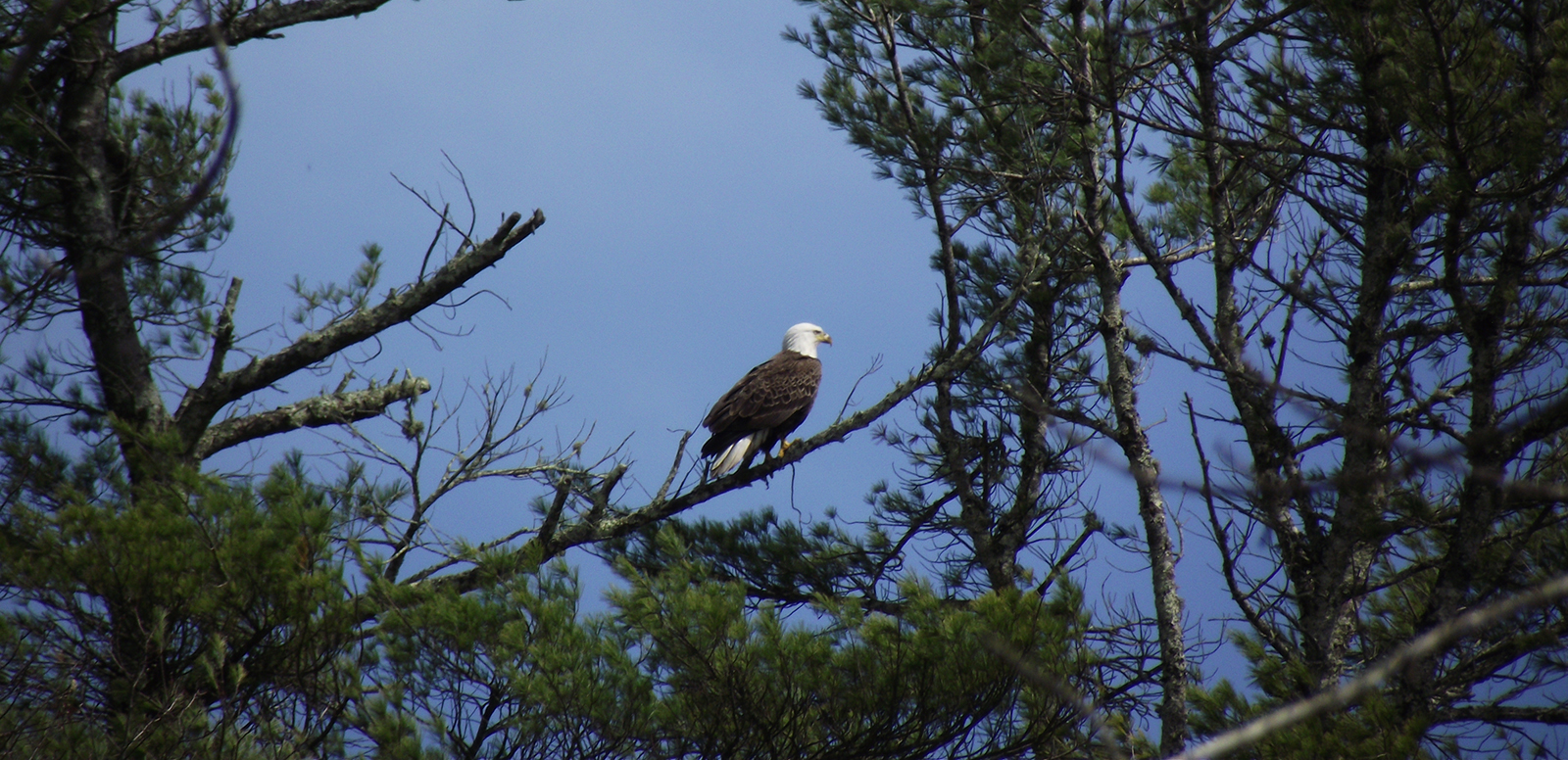Her Patients Are Afraid of Her and She Loves It
Wildlife Clinic of Rhode Island veterinarian works to avoid forming a bond
June 3, 2024
SOUTH KINGSTOWN, R.I. — Dr. Blaine Hymel considers a visit with a patient successful if, by the end of it, the patient won’t look at her. If they actually flee from her, that’s even better.
“The fact that they run away from us is a good thing,” Hymel said.
Hymel doesn’t care for human patients. She’s the veterinarian at the Wildlife Clinic of Rhode Island, a nonprofit that since 1993 has been taking in orphaned or injured wildlife. The clinic, in a house off Tower Hill Road, cares for roughly 6,000 animals each year.
The idea in caring for wildlife, Hymel said, is to keep them wild. That’s why she’s happy if her patients don’t like her. On a recent visit to the clinic, most of the cages that housed animals — which ranged from a one-eyed barred owl to a fisher to three fawns — were covered with towels or blankets, to keep them from getting used to humans.
The goal, said both Hymel and William Morrissette, the clinic’s executive director, is to release the animal once it’s healthy enough.
“We do our best to try to keep the animal wild,” Morrissette said. “We do our best to make sure there’s only one person feeding [the animal], and sometimes we’re feeding through holes, so they don’t see us. We don’t want them to become acclimated to humans, because that could hurt them in the wild.”
‘Caring for wildlife’
The clinic is housed in a large, shingled home that has been retrofitted with an intake room with an X-ray machine, operating tables, other medical equipment, an isolation room, and various rooms lined with cages ranging in size from small to large. It’s the state’s only clinic dedicated to the veterinary care and treatment of all species of wild animals.
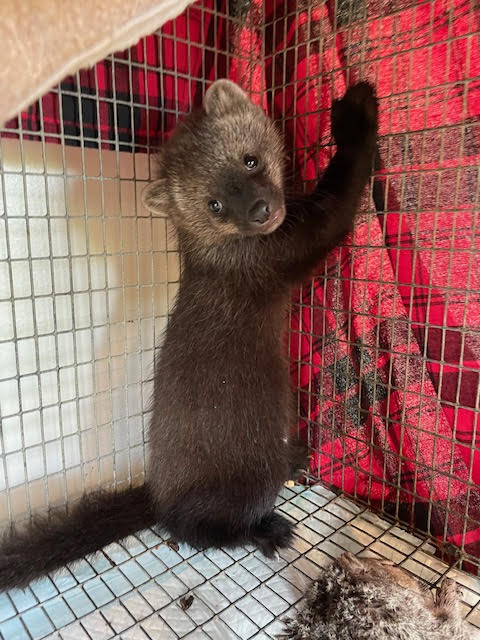
Outside the clinic there’s a large, fenced area to house fawns once they are ready to go outside; a number of avian cages containing anything from crows to grackles to white pigeons to owls; an eagle cage; and a couple of buildings that house raccoons and foxes.
Hymel is the clinic’s only full-time vet; the clinic’s former vet of 30 years, Dr. Chi Chan, although technically retired, often can be found in the clinic caring for her specialty: fawns. There’s a staff of 10 people, Morrissette said, as well as a robust network of volunteers.
Hymel, a Rhode Island native, was a volunteer at the clinic starting in 2013 and went on to become an at-home rehabber, staff member, and later animal care coordinator. She received her doctorate from Cummings School of Veterinary Medicine at Tufts University; completed a rotating internship at Bulger Veterinary Hospital in Lawrence, Mass.; and has spent time at several zoos and wildlife clinics in the area.
She said she always knew she wanted to take care of wild things.
“I like dogs and cats, but I really liked caring for wildlife,” she said.
‘Gruesome wounds’
That was evident as Hymel, smelling slightly of a baby skunk she had just treated, showed a visitor an angry female snapping turtle in a large, blue plastic tub that had been hit by a car and rescued by a good Samaritan.
The turtle’s defense mechanism, Hymel explained, “is to stand up” when threatened. So, as the car drove over it, the results were “gruesome” wounds in which parts of the shell had been scraped off, exposing muscle tissue and organs. Hymel filled the wounds with beeswax.
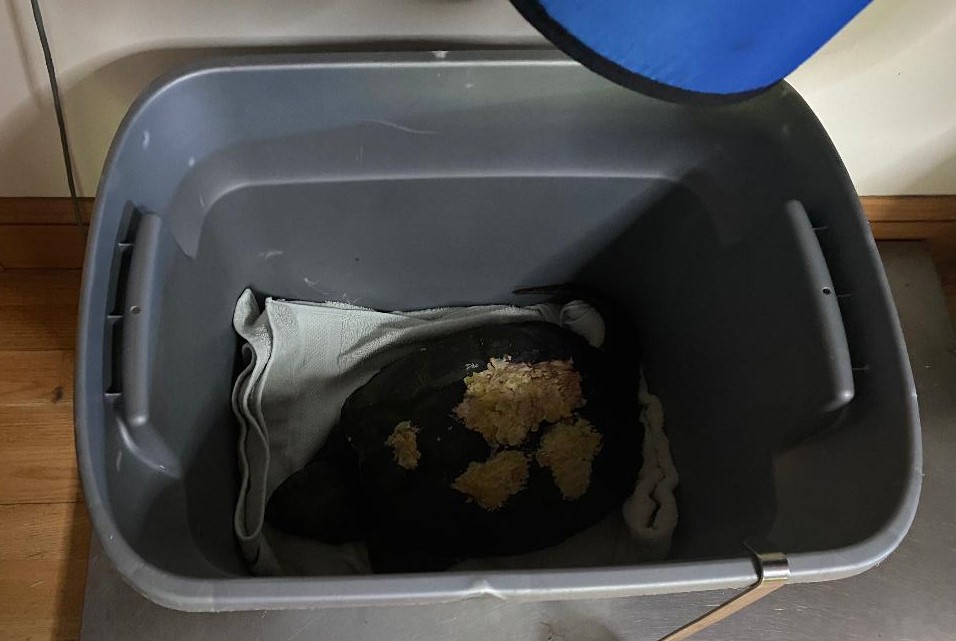
“The beeswax acts as a seal, and makes [the wounds] waterproof, meaning she can go back in the water” at the clinic while she heals, Hymel said. If she were in the wild and had gone into the water, she said, the turtle probably would have drowned because parts of her body cavity were open.
Hymel was positive about the “feisty” turtle’s recovery. “Turtles can recover from amazing things,” she said. “These are phenomenal creatures that have surprised me.”
Next door to the turtle was the isolation room, which housed a recently rescued gull that still smelled of the sea. The gull was being isolated while it was tested for avian influenza, Hymel said. “Anyone that’s a high suspect, they’ll get their physical exam in here and will stay in here until they get clear.”
Each rescued animal gets a full evaluation and exam as soon as it arrives, and Hymel will devise a treatment and housing plan based on the animal’s injuries.
Next door to the isolation room was the surgical suite, which at the moment had been repurposed as a fawn rehab room. In the darkened room, three playpens were covered with blankets to keep the rambunctious fawns quiet so they could heal.
This time of year, Hymel said, fawns are frequently brought in, but whether they’ve actually been abandoned by the mother is often uncertain. Female deer will often hide their newborn fawns from predators in a safe place while they feed, and return to nurse them. Often, however, someone will see the fawn and assume it’s been abandoned. There’s a couple ways to tell if that’s true, Hymel said. One is to put rocks or something on the ground to mark where the fawn is. If the fawn hasn’t been moved in a few days, something has probably happened to the mother. Another way to tell if a fawn has been abandoned is to check for dehydration, Hymel said.
“If they have signs of dehydration, that only really happens when mom’s not been around for an extended period of time,” Hymel said. “Look at the fawn’s ears. If they are flopped or curled backward, it often means they’re dehydrated. So when you see that, you know the mother has not been around.”
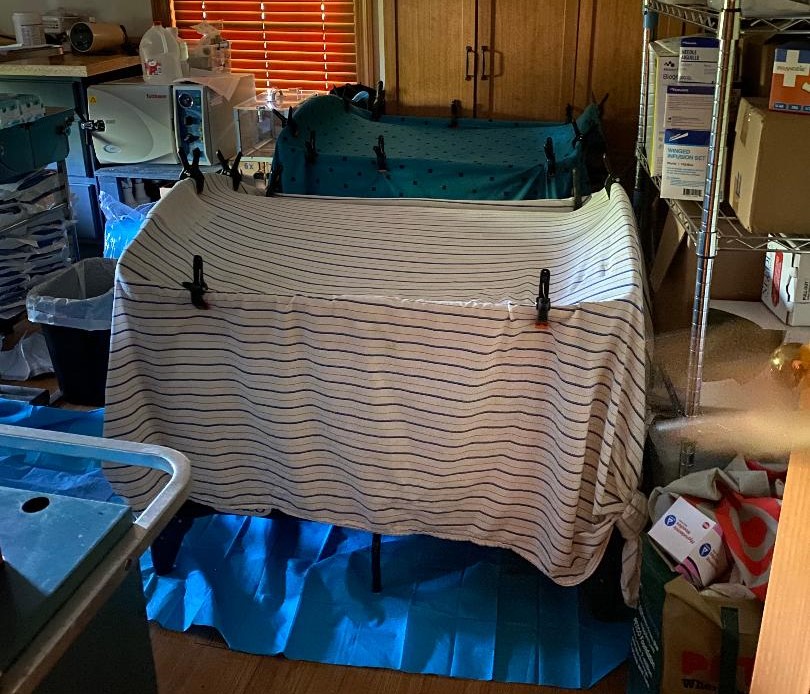
Wild animals, not surprisingly, are everywhere at the clinic. A staff member walks by with a small plastic tub full of baby groundhogs, while another sorts and cleans mealworms. In a room with a white noise machine set to “crickets,” an injured robin flies back and forth, making its cage rock as though a much larger bird is inside.
In another room, behind a towel, is a one-eyed barred owl. Hymel had removed the owl’s other eye due to an injury. She left the owl’s eye socket open, she said, so that it will look “like a normal owl” and hopefully find a mate once it’s released.
Educating the public
Especially in the spring, the clinic receives a lot of calls about injured or abandoned animals. Office manager Brieanna LaFleur, who has a bachelor’s degree in wildlife and conservation biology from the University of Rhode Island, fields most of those calls.
“A lot of our work is education, where we’re just saying, ‘Hey, you know what, leave the nest alone,’ or do this, which will allow you to check to see if the mother has abandoned, or if the mother is coming back,” Morrissette said. “We try to do the best we can to educate people as to what the situation is.”
When the clinic is closed, there’s a network of volunteer animal rehabbers who take the calls and triage the animals if necessary. There’s a total network of 125 volunteers at any given time, Morrissette said, with 75 in-clinic volunteers. Each day 11 volunteers help out at the clinic with feedings, waterings, and medicating, he said.
“We have our in-clinic volunteers, and then we have a transport network,” Morrissette said. “We have volunteers that do nothing but pick up injured animals.” When there’s an injured animal, a message will go out on a group app and “one of our network transporters will respond and say ‘I’ll get it’ and then they will bring it either here or to a nighttime triage center that we have a cooperative agreement with.”
There’s also at-home rehabbers, who take injured animals into their homes until they’re well enough to be released.
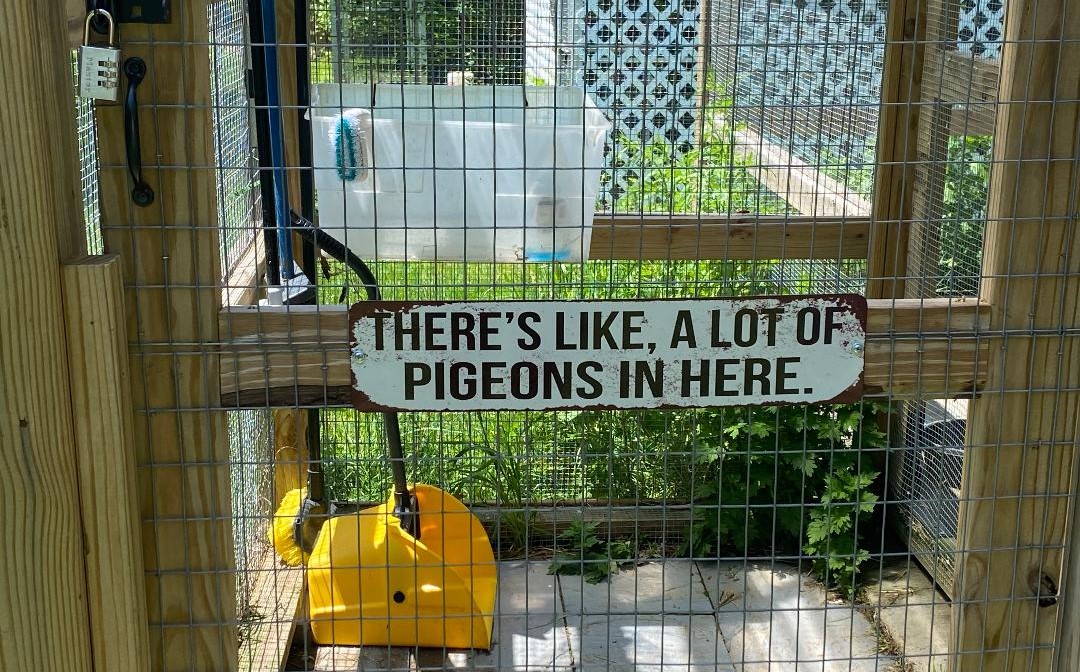
“Once the animals are medically sound, they will go out to home rehabbers,” Morrissette said.
The clinic is a 501(c)3 nonprofit and does not request payment from members of the public who bring animals to the clinic, instead relying on fundraisers, grants, and donations to cover the associated overhead, as well as food and medical supplies. The organization has operating expenses of about $500,000 annually.
When longtime volunteer vet Dr. Chan retired in 2022, the clinic had to find the money to pay a vet’s salary. It turned to the state for some of the money and got $100,000 allocated in the 2023 state budget.
“We pretty much went to the state and said, this is really important work. The state did step in and provided us funding through the state budget to pay for our vet,” Morrissette said.
As Hymel was walking back into the clinic after a tour of the facility, an animal control officer from Coventry pulled up and unloaded a plastic bin.
“Here’s another animal,” Hymel said.

